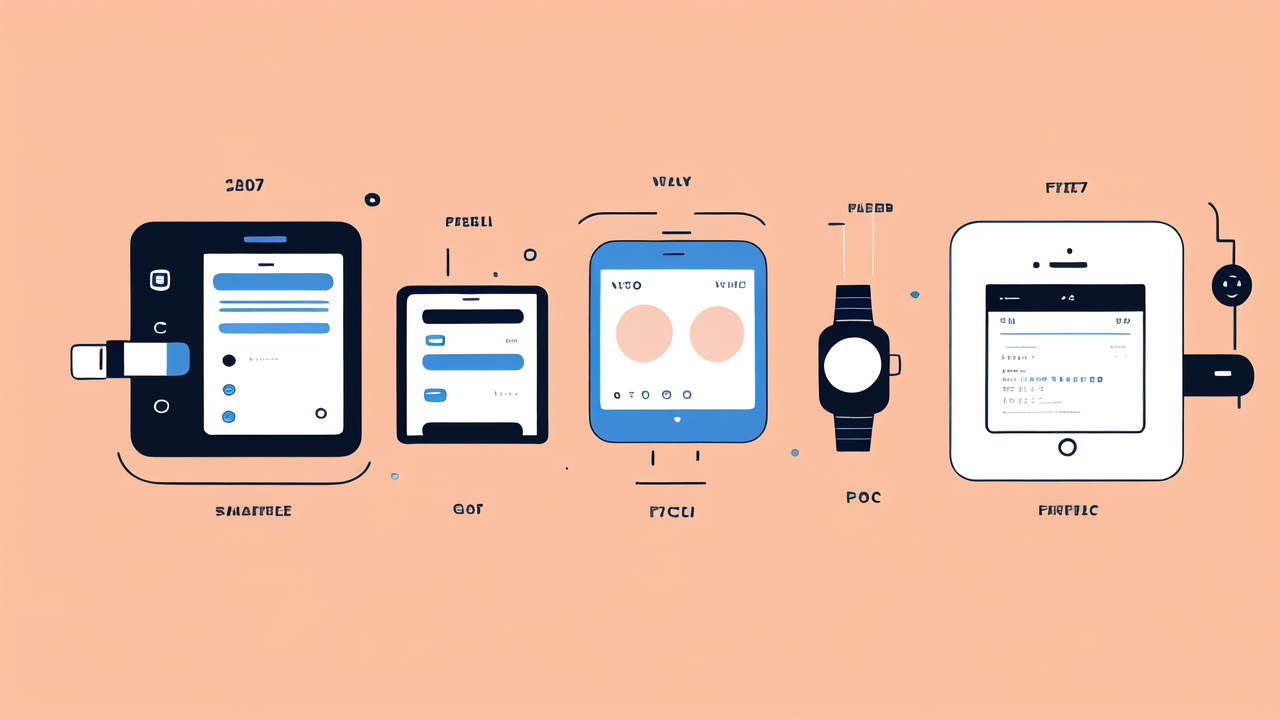Understanding the Evolution of the Smart Watch Market
The Beginning of Wearable Technology: A Historical Perspective
Wearable tech has come a long way since its early days. The concept dates back to the 1970s with calculator watches. These simple devices paved the way for more advanced wearables. In the 1980s, digital watches gained popularity. They offered features like alarms and stopwatches. The 1990s saw the birth of early fitness trackers. These devices could count steps and monitor heart rates. By the 2000s, companies began exploring more advanced wearable concepts. This led to the development of the first modern smartwatches in the early 2010s.

Key Milestones in Smart Watch Development
The smart watch market has seen rapid growth and innovation. Here are some key milestones:
- 2012: Pebble launches its first smartwatch through Kickstarter
- 2013: Samsung releases the Galaxy Gear
- 2014: Apple introduces the Apple Watch
- 2015: Android Wear (now Wear OS) becomes widely available
- 2017: Fitbit launches its first smartwatch, the Ionic
- 2019: Hybrid smartwatches gain popularity
- 2020: Advanced health features become standard in many models
These milestones show how quickly the market has evolved. Each new release brought better features and more uses.
Technological Advancements Shaping Today's Smart Watches
Modern smart watches are packed with advanced tech. Here are some key features:
- High-resolution touchscreens
- Powerful processors for smooth performance
- Long-lasting batteries
- GPS for accurate location tracking
- Heart rate monitors and ECG sensors
- Blood oxygen level sensors
- NFC for contactless payments
- Water resistance for swimming and diving
- Cellular connectivity for phone-free use
These advancements have made smart watches more useful and appealing. They can now perform many tasks that once required a smartphone.
The Impact of Smart Watches on Consumer Lifestyle and Well-being
Enhancing Health and Fitness: The Role of Smart Watches
Smart watches have become powerful tools for health and fitness. They can track various metrics:

- Steps taken
- Calories burned
- Heart rate
- Sleep patterns
- Stress levels
- Workout intensity
Many watches also offer guided workouts and activity reminders. This helps users stay active and meet their fitness goals. Some advanced models can even detect falls or irregular heart rhythms. These features can be life-saving in emergencies. By providing real-time data, smart watches empower users to make informed health decisions.
Personalization and Convenience: The Lifestyle Shift
Smart watches have changed how we interact with technology. They offer quick access to information and services:
- Notifications for calls, texts, and apps
- Voice assistants for hands-free control
- Music playback and control
- Contactless payments
- Navigation and directions
- Weather updates
- Calendar reminders
These features make daily tasks more convenient. Users can stay connected without constantly checking their phones. Customizable watch faces and bands allow for personal expression. This blend of function and style has made smart watches a popular accessory.
Safety and Awareness Features in Modern Smart Watches
Smart watches now include features that enhance personal safety:
- Emergency SOS calls
- Fall detection and alerts
- Location sharing with trusted contacts
- Noise level monitoring to prevent hearing damage
- Menstrual cycle tracking for women's health
- Mindfulness and meditation apps for mental well-being
These features provide peace of mind to users and their loved ones. They can be especially helpful for older adults or those with health concerns.
Trends and Future Outlook for the Smart Watch Industry in the United States
Innovations Paving the Way for Tomorrow's Smart Watches
The smart watch industry is constantly evolving. Here are some exciting innovations:

- Flexible and rollable displays
- Advanced health sensors for blood pressure and glucose monitoring
- Improved battery life and wireless charging
- Enhanced voice control and natural language processing
- Integration with smart home devices and IoT ecosystems
- Augmented reality features for navigation and information display
- Advanced fitness tracking with AI-powered coaching
These innovations will make smart watches even more capable and useful. They may soon replace many functions of smartphones.
The Role of AI and Machine Learning in Evolving Wearables
AI and machine learning are changing the game for smart watches. They enable:
- Personalized health insights and recommendations
- Predictive maintenance and battery optimization
- Automatic activity detection and logging
- Advanced voice assistants with natural conversations
- Improved accuracy in health and fitness tracking
- Customized user experiences based on habits and preferences
As AI continues to advance, smart watches will become smarter and more intuitive. They'll be able to anticipate users' needs and provide proactive assistance.
Market Predictions and Consumer Expectations for the Next Decade
The smart watch market is set for continued growth. Experts predict:
- Increased adoption across all age groups
- More affordable options to reach wider markets
- Focus on health and wellness features
- Integration with telemedicine and remote patient monitoring
- Improved battery life and charging solutions
- Enhanced data privacy and security measures
- Specialization for specific industries (e.g., healthcare, fitness, business)
Consumers expect smart watches to become more autonomous and powerful. They want devices that can truly replace smartphones for many tasks. The future of wearable tech looks bright, with smart watches leading the way.




Leave a comment
This site is protected by hCaptcha and the hCaptcha Privacy Policy and Terms of Service apply.